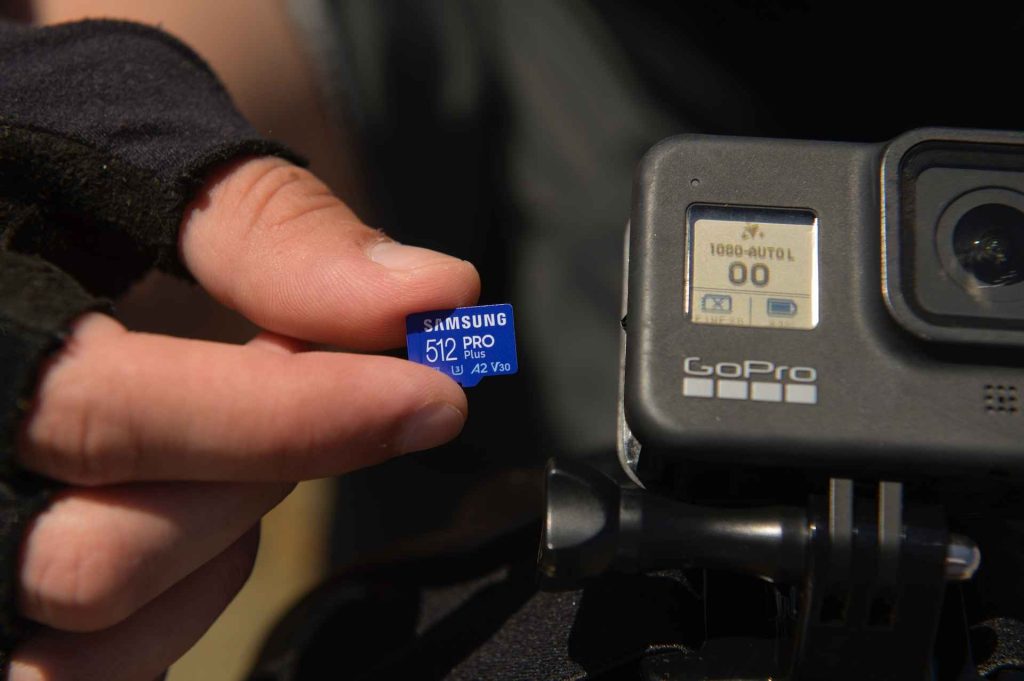Trail, game, or wildlife cameras have become indispensable tools for hunters, researchers, and nature enthusiasts. These rugged, motion-activated cameras allow you to remotely monitor game trails, feeding areas, and other hot spots, capturing high-quality images and HD video when animals wander into view.
But like any camera, a trail cam is only as good as its storage capacity. Choosing the right SD memory card can vastly improve your trail camera’s image storage abilities, allowing you to collect more data before swapping cards.
This article will go over the key factors to weigh when selecting an SD card to get the most out of your trail cam. We’ll look at speed ratings, storage capacities, durability needs, and more to help you enhance image storage and minimize inconvenient gaps in coverage. Learning what SD card features cater best to trail cams can empower you to capture more action shots and observations without missing a beat. An SD card upgrade is one of the simplest ways to extend your trail camera’s working memory and performance.

Contents
- Factors to Consider When Selecting an SD Card
- Speed Rating
- Capacity
- Understanding SD Card Capacities
- Gigabytes
- Video Resolution
- Recommended Capacities
- Plan Storage Needs
- Durability
- Brand Reputation
- Choosing the Right Speed Rating
- Speed Classes
- UHS Ratings
- Faster is Better
- Minimum 10
- Other Considerations
- Wrapping Up
Factors to Consider When Selecting an SD Card
When shopping for an SD card for your trail camera, there are a few key specifications to keep in mind that can optimize storage capacity and camera performance.
Speed Rating
The speed rating on an SD card indicates how quickly it can transfer data. Cards with higher speed ratings allow your trail camera to take more consecutive photos or record longer video clips without pausing to finish writing files. You’ll want a minimum of a Class 10 card for trail cams, though UHS-1 or UHS-3 options provide even faster write speeds. This enables capturing fast action sequences without lag.
Capacity
The gigabytes (GB) of storage on the card determine how much data it can hold. Standard definition trail cams may only need 8GB. But for crisp 1080p video or higher 4K ultra HD quality, 32GB or higher is recommended to avoid filling up too fast. Think about your desired image resolution and frequency to choose ample space.
Understanding SD Card Capacities
When choosing an SD card for your trail camera, it’s important to understand the meaning of capacity measurements like gigabytes (GB) and how video resolution impacts your storage needs. This will help you select a card with ample space.
Gigabytes
The main measurement of data storage on SD cards is gigabytes (GB). 1 GB equals about 1,000 megabytes or around 500 photos at a 12-megapixel resolution. The video takes up much more space.
Video Resolution
The standard definition video is 720p. A 16GB card holds around 90 minutes of 720p footage. For crisp 1080p HD video, expect 16GB to store for roughly 60 minutes. 4K ultra HD video consumes vastly more storage, with just 10-15 minutes per 16GB.
Recommended Capacities
For a trail camera capturing mainly still photos, 8GB may be sufficient. But for hybrid models shooting video, 32GB or 64GB cards are better to maximize storage. Some higher-end cameras have slots for two cards.
Plan Storage Needs
Consider your desired resolution, video length, and frequency of triggering events. This helps determine the ideal storage capacity. Planning avoids wasting photo/video opportunities once the card fills up. Some trail cameras have two SD card slots, allowing you to double the storage.
With SD cards now available up to 1TB, plenty of options suit your trail cam’s storage demands. Going with a higher capacity card or using dual cards to double the storage means you can go even longer between site visits before needing to offload images and footage. Choosing ample capacity enables capturing more activity before the storage is full.
Durability
Since trail cams get exposed to the elements, get a card made to withstand dust, moisture, shock, and extreme temperatures. Look for SD cards marketed as outdoor/adventure-grade with sturdy construction.
Brand Reputation
Stick with major brands like SanDisk, Sony, and Lexar when buying SD cards for reliability. Avoid generic cards, which may have less consistent memory quality or lifespan.
With the right balance of speed, ample capacity, and durability, a quality SD card enables your trail camera to capture and store far more images and footage before swapping it out. Faster write speeds also allow you to collect crisp action sequences without missing a thing.

Choosing the Right Speed Rating
Along with storage capacity, the speed rating is crucial when selecting an SD card for your trail camera. Faster write speeds allow your camera to operate more efficiently.
Speed Classes
SD cards have speed classes ranging from 2 to 10, with 10 being the fastest. Class 10 is the minimum you should use in a trail cam to ensure quick data writing.
UHS Ratings
UHS (Ultra High Speed) ratings denote speeds up to 312 MB/s. UHS-I and UHS-II are faster than Class 10, while UHS-III is overkill for trail cams.
Faster is Better
The faster the write speed, the less time your trail cam will need between taking photos or recording video clips. This allows for capturing fast action sequences.
Minimum 10
While basic SD cards may be Class 2, 4 or 6, a Class 10 or UHS-I/II card is recommended for trail cams. This enables quick writing of high-resolution image files.
Investing in a card with a suitable speed rating prevents lag time between camera triggering and image capture. This helps you collect crisp, continuous footage of passing games and other brief events that a slower card could miss.
Other Considerations
Beyond speed, capacity, and durability, there are a few other factors to weigh when selecting the right SD card for your trail camera:
Avoid Generic Cards. Bargain SD cards from lesser-known brands often cut corners on memory quality or reliability. Pay a little more for a major brand.
Watch for Counterfeits. Fake SD cards claiming to be from major brands may have less storage than labeled. Only buy from authorized retailers.
Get Trail Cam Specific Cards. Some SD cards are optimized and pre-formatted for security cameras and trail cams. These ensure ideal performance.
One Card Per Camera. Use a separate SD card per trail camera rather than swapping one between units. This prevents mix-ups in tracking image locations.
Check Reviews. Verify a card model has positive reviews for holding up well in outdoor use before purchasing. Avoid problematic batches.
Considering these additional factors helps you select a micro SD card that’s purpose-built for trail camera use’s rigors and storage demands. Investing in the right card ensures you get reliable performance and aren’t missing any action.
Wrapping Up
Upgrading to a high-capacity, high-speed SD card designed for security cameras is one of the best ways to enhance your trail camera’s storage abilities. Choosing a card with ample gigabytes means capturing more images and footage before filling up the card. Fast write speeds allow your camera to keep up with action, taking sequential shots without missing a beat. And durable construction stands up to harsh outdoor conditions, so your memory card works as hard as your trail cam.
Considering factors like speed rating, storage space, brand reputation, and intended use when shopping for SD cards allows you to match the right card to your trail camera’s demands. Taking the time to optimize your memory storage empowers you to collect more useful data on game movements and behaviors rather than losing capturing opportunities once your card maxes out. The right SD card choice pays off each time your trail cam snaps clear, crisp images of passing wildlife crossing its field of view.



